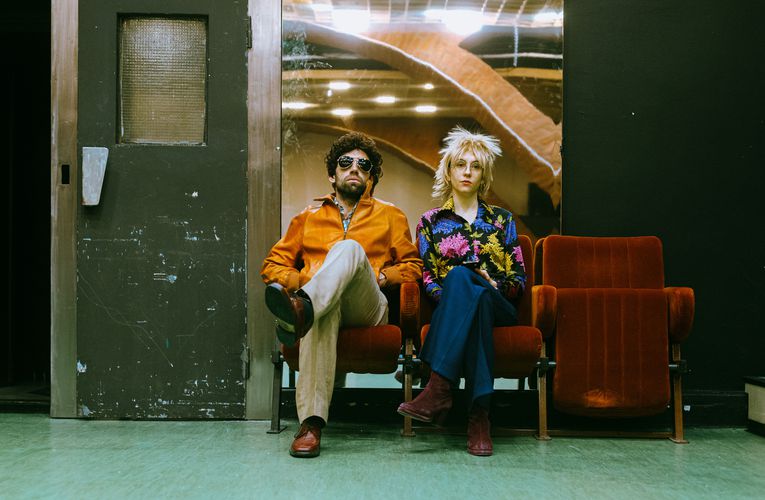
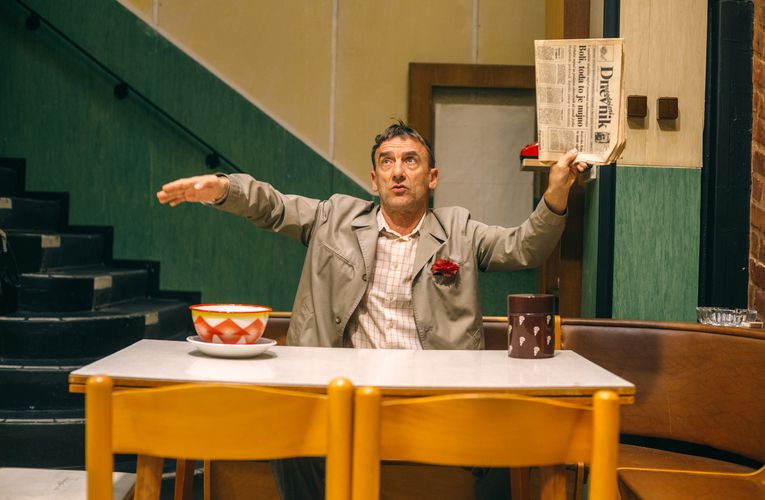

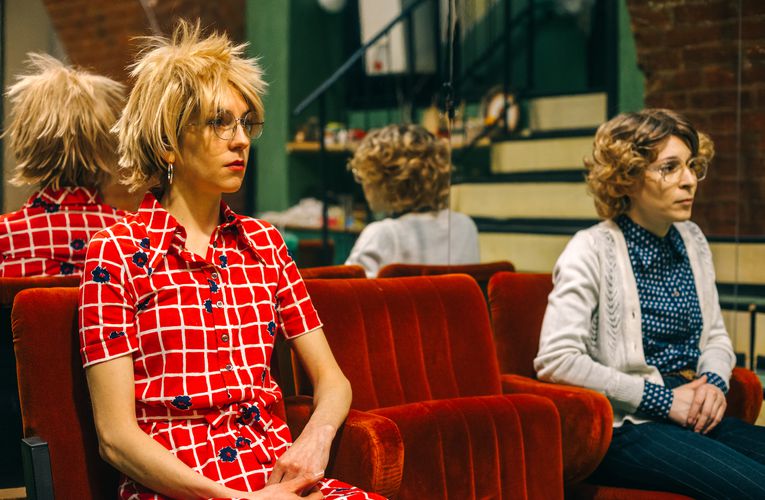

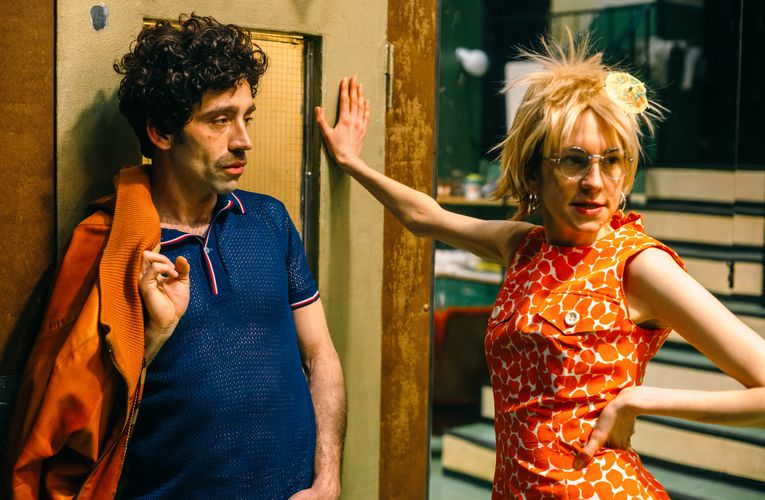

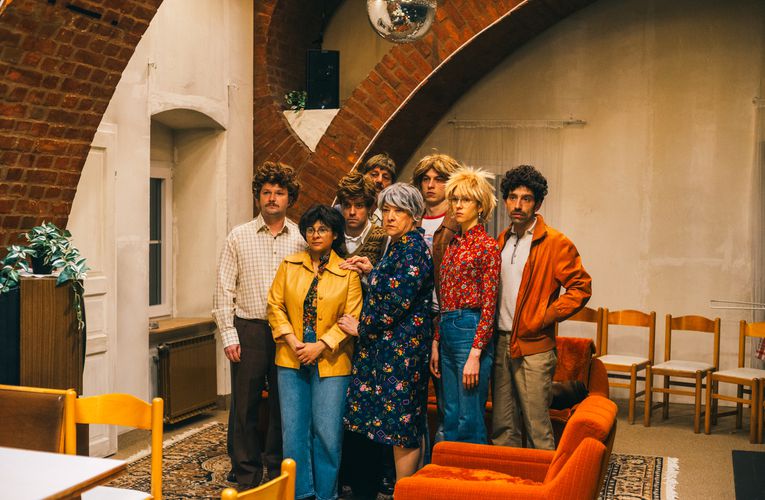
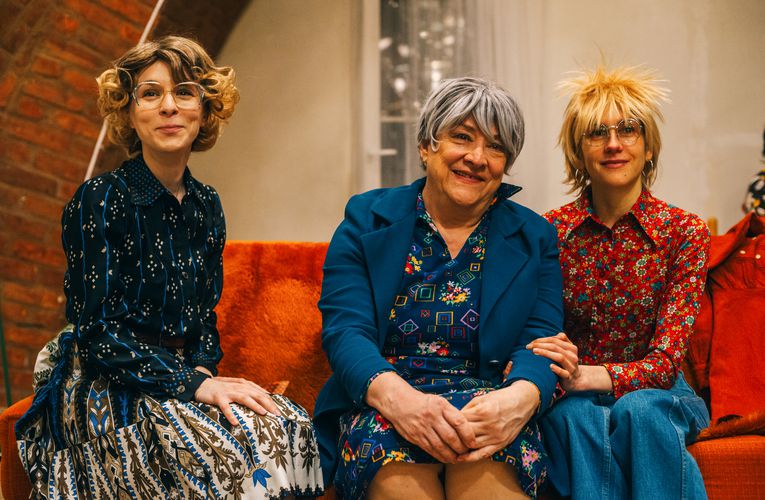


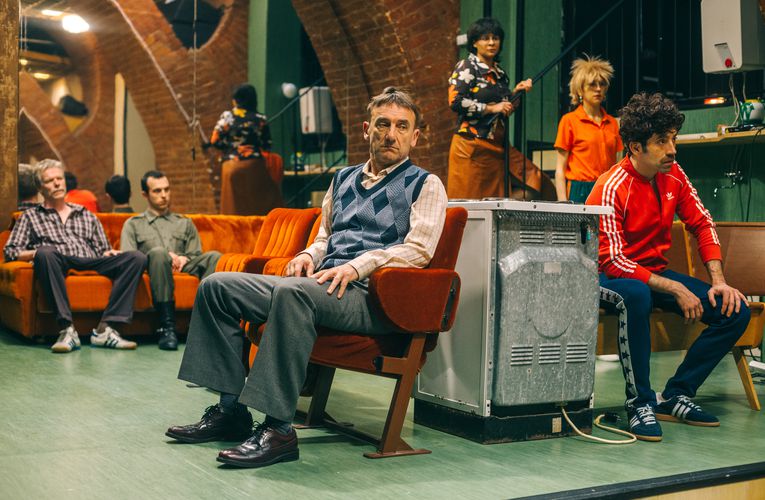
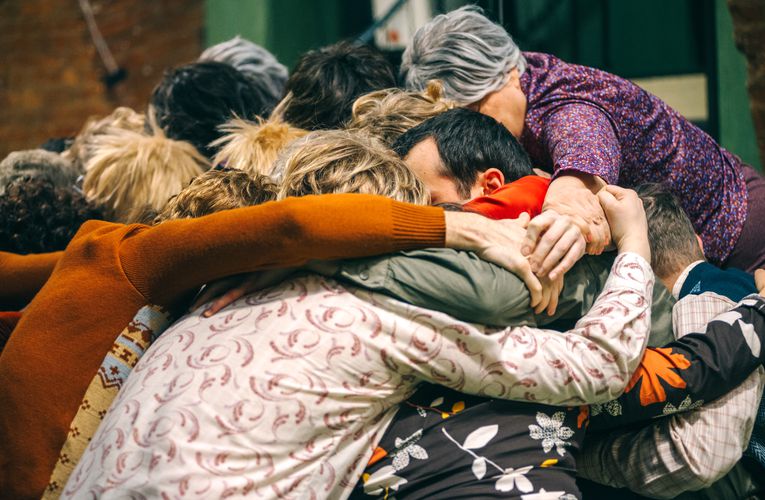
1974
- Dramaturgy: Tomi Janežič
- Set design: Branko Hojnik
- Costume design: Marina Sremac
- Music: Samo Kutin, Enja Grabrijan
- Video: Carlo Zoratti
- Sound design: Silvo Zupančič
- Lighting design: Tomi Janežič, Branko Hojnik
- Assistant director: Brina Klampfer Merčnik, Gabrijel Lazić
- Costume design assistant: Slavica Janošević
- Cameraman: Stefano Giacomuzzi
- Video sound: Renato Rinaldi
- Stage managers: Liam Hlede, Urša Červ
Special thanks to Neda R. Bric, Daša Doberšek, Linn Julian Koletnik, Jan Krmelj, Voranc Mandić and Draga Potočnjak.
The theatre dodecalogy 1972–1983 (a part of the DESTINYation project) directed by Tomi Janežič is a year-long theatre omnibus of twelve theatre productions that are being or have already been created in theatres in Nova Gorica, Ljubljana, Timisoara, Ivano-Frankivsk, Novi Sad and within the Krušče Creative Centre. Their content is inspired by growing up in Nova Gorica – a city linked to other cities in surprising ways – in the 1970s, and they will research topics such as transgenerationality, borders, social, political and ideological changes, wars etc. They will talk about the places of growing up, the locations marked by us and about us, marked by the locations of watershed events. But above all, they will be an omnibus about theatre itself. The creators from the Mladinsko Theatre will take part in two of the twelve productions, 1974 and 1980; the first one will premiere in the season 2024/2025, and the second, a season later. Both transgenerational fictions will originate from creators’ personal stories.
Perhaps the magic of Janežič’s theatre is in how he – using his signature dramaturgical and directorial techniques – manipulates us to the point when every spectator’s experience of the performance is similar, yet unique. […] The dynamics between Anja (Anja Novak), Vito and Klemen (Klemen Kovačič) is outstanding. Vito Weis shines especially in the dance scenes and Klemen Kovačič only needs a line or two to light up the stage. His body language and facial expressions are strong, and he is downright chilling in the army scene, when he is convinced he is dying. Nataša’s (Nataša Keser) role is a perfect counterpoint to Anja’s: her softness, gentleness, and introversion paints, on the one side, her selflessness and devotion, and on the other, the entrapment of women of that era in a patriarchal system. […] Blaž (Blaž Šef) embodies of all of the above when, after his parents’ sudden death, he begins caring for little sister together with his tenant Lina (Lina Akif). […] In the role of the ‘Nonna’, [Damjana Černe] adds sparling wit that alleviates the otherwise heavy topics the show addresses. […] When Matija (Matija Vastl) obtains the documents that reveal his pain, it is the music [Samo Kutin] that deepens his distress in the already intense scene, making it resonate deeply with the audience.
Along with the narrative threads, one of the essential qualities of the production(s) appears to be the visual impact of Branko Hojnik’s stage design […] and Marina Sremac’s costumes. […] The matriarch of the central family cell is Nonna Damjana, flawlessly interpreted by Damjana Černe, who brings the much-needed humour to the production. […] Robert Prebil, one of the more compelling ensemble members, even in his silent scenes, and a slightly less regular visitor, the enigmatic nephew Stane, portrayed by Stane Tomazin, who created his character with utmost preciseness, in both his voice – and accent – and his body, whose presence – never quite relaxed in the family environment, bring a different, specific form of co-existence into the dramaturgy. This blended family continues with Damjana’s daughter Nataša – Nataša Keser – who is another character with accentuated physical expressiveness on stage. […] Matija Vastl, as her husband Matija, convincingly creates the archetypally reserved father, painfully powerless in articulating his affection […] The family also includes his children from his first marriage: daughter Anja (Anja Novak), astounding in her impulsive eruptivity, and son Klemen, played by Klemen Kovačič. And it is primarily Kovačič’s outstanding presence that creates the impression that the production is headed towards intergenerational schism, as his inability to endure the pressures of the military service is linked to how small he feels in relation to his father.
The actors of the Mladinsko Theatre are hugely talented, which they have proven in many other productions. In this performance however, they really had the opportunity to showcase their skills. The play’s structure – each character’s story is told one after another, allows every actor to create their own monologue. Following the conventions of epic theatre, the actors address the audience, narrating their characters’ stories in the third person and just after that they become their characters and play their role. However, this sense of distance does not diminish the audience’s emotional engagement with the characters’ complex psyches. At times, the actors form a 'collective actor’s body' – standing together as if posing for a photograph, attentively listening to another character’s story and following their journey. Sometimes they react collectively to the narratives or even step into them. […] Although many theatrical tools are used in this production, the most important one, shaping its emotional reception, is nostalgia – perfected by the director and actors. It is nostalgia that can evoke both tears of sadness and joy, bring back memories or give them a new dimension. The play is almost the epitome of nostalgia, balancing between emotion and laughter, guiding the audience through extreme emotions – a moment of crying can instantly be replaced by laughter. It also touches on the nostalgia of falling in love for the first time, especially in the scene where Anja and Vito meet for the first time. It awakens memories of youthful dreams in an amazing concert scene, where the male part of the acting ensemble performs an arrangement of the song Piši mi. The performance weaves personal stories into a tale so real and human that it becomes universal. […] The atmosphere created by the show makes you want to stay in the world of the 1974 family and never leave the theatre.
Through a fluid mixture of the narrative and dramatic, scenes line up that focus on one protagonist after another, at times through a single event, at times in their broader life arch, with the material of these 'images' in itself not necessarily more essential than their emotional temperature, from which different relationships are woven, the interpersonal connectedness that emanates from closeness but also loss and pain; these changes are importantly (and at times perhaps too suggestively) tinted by Samo Kutin’s music. This type of concept, which reminds of a kind of postcard of human states, glowing into the universal while being clutched by the moment, only truly comes to life when acting parts are efficient acting – the performers skilfully leverage the affection the production shows to its heroes and create complex roles, although of different volumes and intonations. It is a ungrateful task to single out Anja Novak (who deftly manoeuvres her recognisable character through different stages of life), Damjana Černe (and her outstanding performance as the chatty, sharp Nonna) or the quiet, but powerful performance by Nataša Keser’s, because Vito Weis, Matija Vastl, Blaž Šef, Klemen Kovačič, Robert Prebil, Matej Recer, Lina Akif and Stane Tomazin would also deserve detailed reviews. We should also mention the ‘mocumentary’ video by Carlo Zoratti, a staple(?) of the series, which contributes an extra dimension to this sensitive theatre experience.
Productions directed by Tomi Janežič all have a special rhythm of activities which is predominantly organic, as it doesn’t let go of the parts or the whole in conception or construction; it doesn’t overlook a single tiny impulse. […] The notes of the historical events from 1974 that shook the world and the homeland and the different cultural and social patterns that marked life in Yugoslavia and beyond serve as reference points and memory triggers and become the basic building blocks of the production. The starting question is what specific circumstances mean to a specific people. And these people can be everymen or women, representatives of the society then – and in somewhat different circumstances also the society today. The historical era also defines the set and costumes. Personal, family, true and adapted stories shared by the creators during the work process transform, over the course of the episodical production that lasts several hours, connect to relationships from which deep, hidden fundamental particles of identity that pose questions on truth, guilt, loneliness and abandonment, about compassion, family ties and similar. 1974 is full of contrasts and sharp edges; they are connected by emotional weaving expressed in words, while understanding often comes from silences or pauses. The gravitas of the individual in lightened by interpersonal relationships, affection, warmth, hope, belonging as well as death and eternity.
Predstava je del uradnega programa GO! 2025.
Special thanks to Neda R. Bric, Daša Doberšek, Linn Julian Koletnik, Jan Krmelj, Voranc Mandić and Draga Potočnjak.